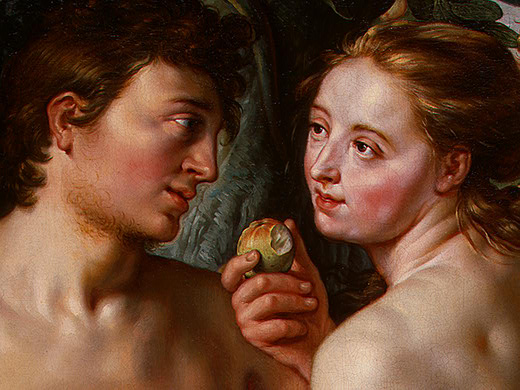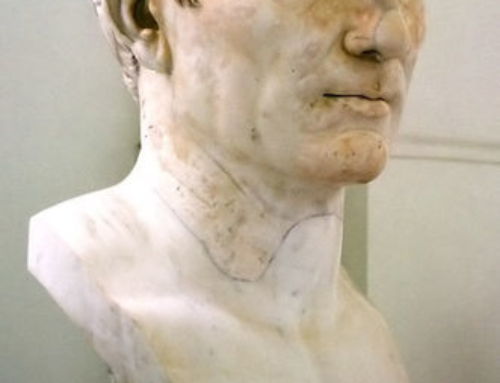Catholics are often blamed for being obsessed with sex, and the ones who lay this charge are usually sex obsessed secularists.
Catholics are interested in sexuality however, because we believe that what we do with our bodies is connected with the destiny of our souls. This is because we believe the human body is not just a container for the soul, but that the soul is interfused with the body–as tea is infused into water.
I got involved in an interesting discussion the other day with some fellow Catholics about the effects of sanctity in one’s life and how it touches human sexuality. The saints are individuals who, by the grace of God, have been purified in this life. They are sanctified completely and have become perfect. That is to say, they have become whole. They are all that God created them to be. Through their life’s journey and struggles God’s grace has perfected nature.’
If this is so, then you would expect the area of their sexual identity to be whole as well. Jung uses the language of anima and animus. Anima being the female aspect of human personality and animus the male. Each of us have within us both anima and animus. This would make sense as we are, both male and female, created in God’s image, and although we relate to God as masculine Father, he must have within himself all the feminine attributes as well.This is not to say that God is feminine, but that God’s “masculinity” is complete, and therefore the feminine is integrated within and through the full “masculinity”.
We would expect, therefore in our Lord, to see a full integration and wholeness of masculinity, and that would include some strengths normally thought of as “feminine.”And so we see that he is able to weep freely and be compassionate. He weeps over Jerusalem and “would gather them under his wings as a mother hen her chicks.” He is able to relate emotionally. He is able to love the little children and not reject them. He understands women just as well as he understands men.
If this theory of mine is true, then we should see a similar fulfillment of the anima within male saints and a fulfillment of the animus within the growth of the female saints. My friends immediately pointed out the “toughness” of St Catherine of Siena, St Teresa of Avila, St Joan of Arc, Bl. Teresa of Calcutta, St Therese of Lisieux and proposed with me that the same would be true of all female saints in their own way, and that the beauty of this sanctification is not that the females became “masculine” but that through the process of sanctification the integration and blossoming of the animus in their lives completed and fulfilled their femininity. They become tough little sisters.
If this theory is true, then Catholic spirituality and the lives of the saints has some pretty trenchant things to say about feminist ideology. Radical feminism seeks not a subtle and naturally grace filled integration of the animus with femininity, but a destruction of femininity by an exaltation of the animus. This also shows up another aspect of contemporary sexual imagery: what I call the Barbie doll female. The woman who is so giggly and girly and vain is not yet fully female. She is a shallow typecast female exhibiting everything female, but without the depth and completion of the animus.
Another example of distorted femininity is the over emphasis on emotion. The unfulfilled female wallows in subjective emotion–both syrupy sentimentality and unbridled impatience and rage. Her emotions are untempered by reason, facts and objectivity. The female saint, on the other hand, has, by God’s grace, learned to accept objective facts and reason without losing the proper passion that gives life.
There are similar observations, therefore to be made for the male saints.
My friends observed the full blossoming and integration of the anima within male saints: St Dominic who wept freely when celebrating Mass, and dealt with his brothers with tenderness of heart and soft compassion; St Benedict who treats his charges with similar tenderness and sensitivity; even the most manly of saints like Ignatius Loyola and Thomas More and Gregory the Great and Thomas Aquinas display a tenderness of heart, compassion and sensitivity that shows the proper flowering of the anima within the male soul. Again, this is not to say that they were effeminate; instead their masculinity is fulfilled and completed with a beautiful integration of the anima rather than a rejection of it. The became true gentle men.
As the female saint is given the gift of balancing emotion with reason, the male saint is given the gift of a more open heart, access to his emotions and the proper embrace and expression of emotion.
As the female saints shed light on the faults of the feminist movement, so the male saints shed light on the lies of the homosexualist movement. This complex maladjustment of the masculine soul is on the one hand, a false feminization which mocks both true masculinity and true femininity. Similarly, as the Barbie Doll female is a shallow travesty of true fulfilled femininity, so the “macho muscle man” is a shallow, immature and false expression of the masculine. You will find no saints who are one step above the gorilla. Instead male saints show us true masculinity which is completed by a fearless acceptance and integration of the anima in the correct way.
Finally, this work is not something that can be accomplished by analysis or therapy or self help or “behavior modification.” It is something that can only be accomplished by the supernatural work of grace in a person’s life. Only through a life of prayer and discipline and humility and self sacrifice can one hope to attain this supreme gift. On this journey the tender female will become tough and the tough man will become tender.
I am not sure how this happens, but I know that it does. I see in the lives of ordinary Catholics this transaction taking place. It happens through the life of prayer and worship. It happens through the vagaries and brought and tumble of life. It happens as we learn the difficult lessons of love.
For my part, as a man, I sense that a devotion to the Sacred Heart of Jesus helps. “O Lord who wears your heart on the outside, take away my heart of stone and give me a heart of fire. Help me to be vulnerable and learn the lessons of love before it’s too late. Help me not to be ashamed to love and be loved. AMEN.”







Thanks, Fr. Dwight. This is the clearest explanation I’ve heard of true masculinity and true femininity. It was very understandable.